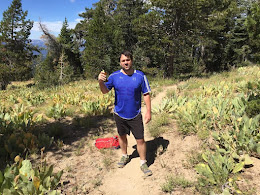
I took a lot of pictures of wildflowers in the Marin Headlands today, then used the good old MS-Paint color picker (eyedropper icon) to pull out a pure color from the petal where it's illuminated by the sun, and a where it's shaded.
I made this because
- I am fascinated by attempts to distill things down to their essence.
- It's amazing how we think of an object as a single color, and yet objectively it is multiple colors as the light is incident on our retina because of shading, and we still understand it as a single continuous object.
- Wildflowers are pretty as hell bro.
This is the full "spectrum" of colors I sampled shrunk down to see all at once.

The first three reds are Indian paintbrush species. There are 20+ species of Indian paintbrush and their ranges overlap significantly, so if you can distinguish and identify the paintbrush species, thanks in advance for doing so in the comments. The last one is live forever, an endangered Dudleya succulent species whose red leaftips are much more brilliant when "purified" by this sampling method. Protect our coastal succulents - they're targets of criminals that are digging them up on masse and destroying them (seriously, read that, it's unbelievable.) Also saw some Dudleya on the trail, which has red-tipped leaves (impressively red when directly sampled.)

The top orange one is a harlequin flower (sparaxis), a South African invasive, then sticky monkey flower, and finally you damn well better know our state flower.

Respectively, again the (center of the) harlequin flower, field chickweed, the yellow part of the Ferdinand iris petal, French broom (invasive - die), goldenfields, and blue-eyed grass (the second stupidest flower name in this post.) Centers of flowers are often yellow, I wonder why. Then again, we're probably missing the important part of the story - flowers are "designed" for bees who can see into the UV.

A nice green leaf, and then the stem of the goldenfields (a more minty green like sage) and the green part of the liver forever - again, amazingly yellower than it seems when seen in situ.

Hound's tongue (one of my favorite despite having the stupidest name ever - maybe they're hallucinogenic when ingested or something), then the sky just above the fog and then immediately overhead, and finallly ceanothus.

Lupine (my favorite, which smelled amazing in this warm day - I used to say they smell like mothballs, but they're actually awesome and much less purple and more blue when purified), blue eyed grass, and again Ferdinand's iris.

Pink is not a real color on the spectrum, but we'll pretend. Checkerbloom (I think), white bindweed, and checkerbloom again.

For white, yarrow, then the sky both in the fog and above it (in situ, seems gray, not blue). Then for black, I was wondering where I would get it from, and had resigned myself to just using the tiny black rim of the harlequin flower, but then as if reading my mind this fellow helpfully landed right in front of me near the trailhead and started cooperatively strutting back and forth. I happen to be fascinated with ravens and the Pacific Northwest art tradition around them.


FIN

